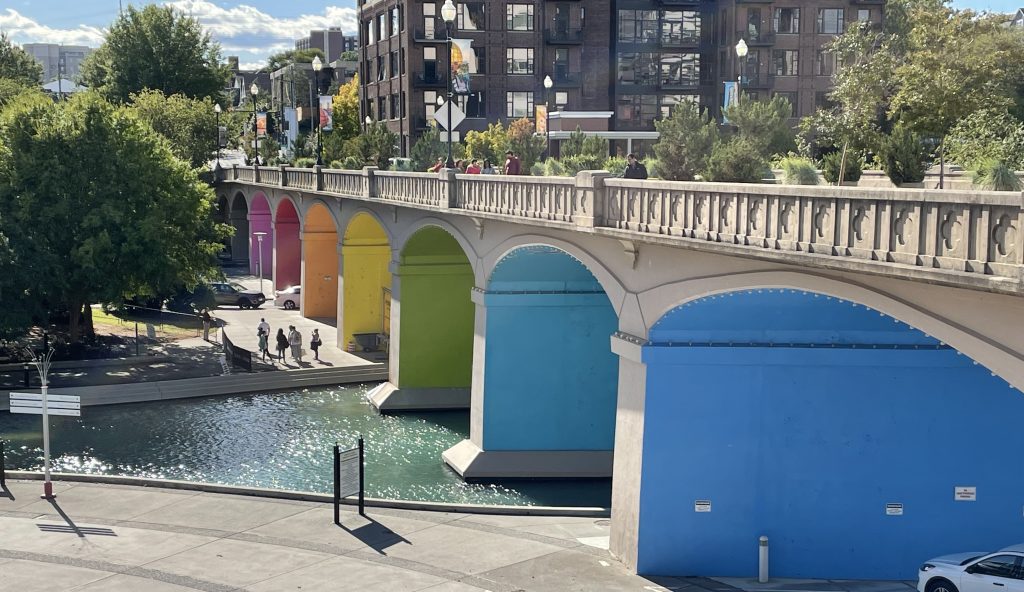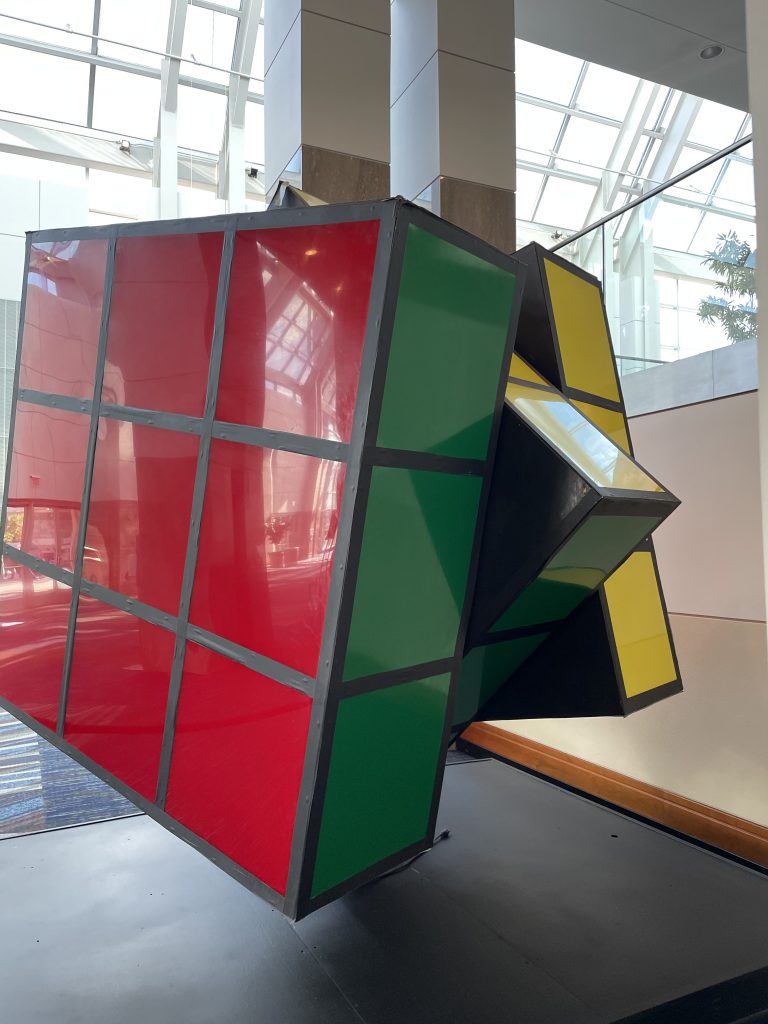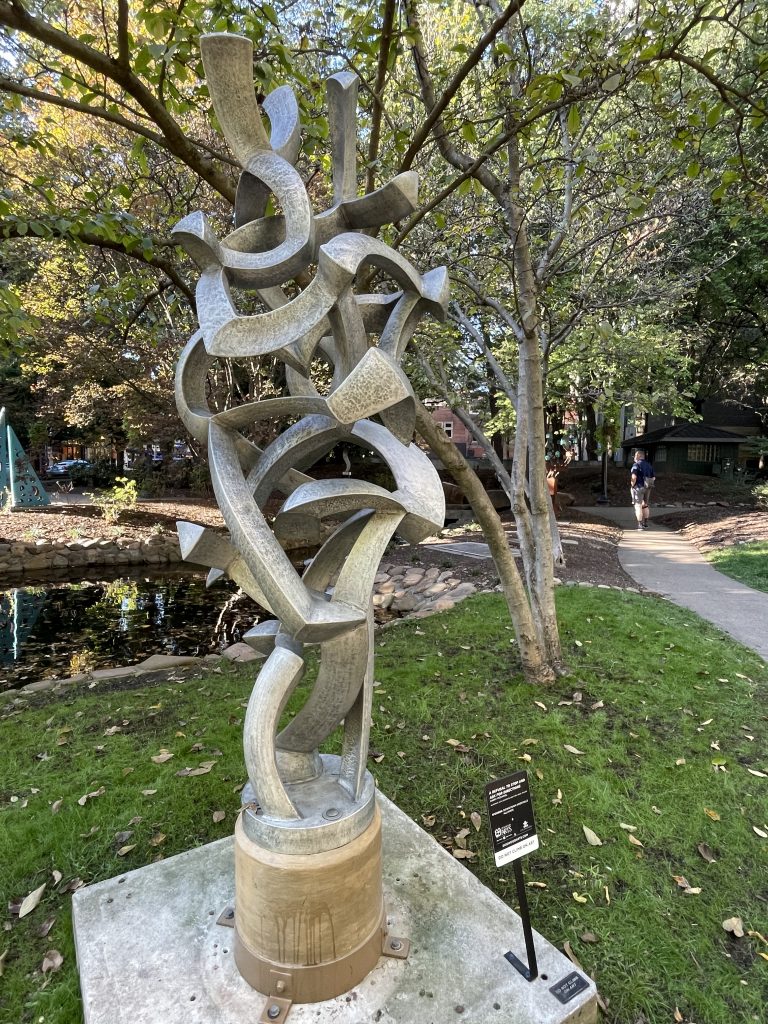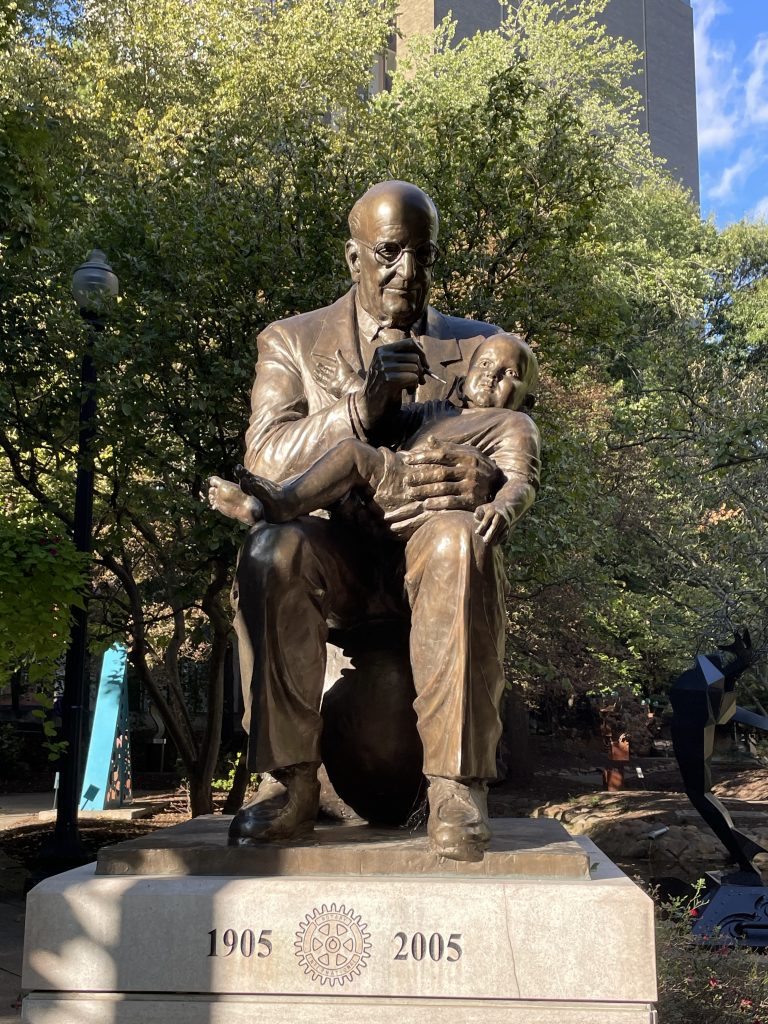We only spent a few hours in Knoxville, arriving late on an October afternoon and heading out the next morning. But as per usual, we made the most of our limited time in the city. The highlights were visiting the Sunsphere and Knoxville Museum of Art, which we covered separately.
On our drive to Knoxville we listened to the Pulitzer Prize winning A Death in the Family (#ad) by James Agee, published in 1957. While the novel does reference and is set in Knoxville, in the end it had very little to do with Knoxville and could have taken place anywhere. Later we passed James Agee Street on our way out of the city.
The Clinch Avenue bridge in World’s Fair Park has a delightful rainbow paint job.
You might think, like we did, that it was a progressive LGBTQ gesture (though there was a big Pride Event happening in the park while we were there, so that might have helped with that line of thought), but the official word is that it was painted to commemorate the 40th anniversary of the 1982 World’s Fair. What one has to do with the other isn’t clear.



His response to the sculpture: “I feel personally attacked.”

In the foreground is an old U.S. Weather Bureau kiosk, which was functional from 1912 to 1933. Dozens of such miniature weather stations were installed across the U.S., filled with thermometers and barometers and other equipment, but this is the only one preserved in its original location (though without its original gear setup). Locals gathered here to check the weather, though by the time they made their way over to it, didn’t they already know the weather?
The sculpture behind is is the Burn Memorial. In the summer of 1920, 35 states had approved the 19th amendment and just one more state was needed to secure women’s right to vote. Tennessee was locked in a tie on the matter. Febb Burn wrote a letter to her son Harry T. Burn, who was a state legislator from McMinn County, and urged him to be a “good boy.” Burn complied, and changed his vote to break the tie in the state House. We first learned about the Burns during a 2021 visit to the Susan B. Anthony Birthplace in Adams, N.Y., in the museum’s exhibit about the history of the suffrage movement.





